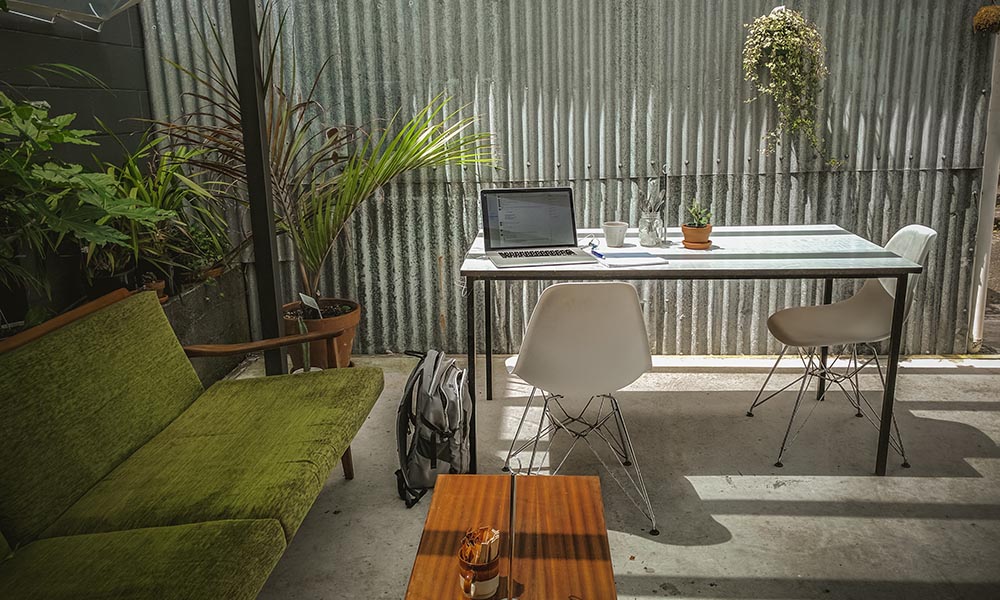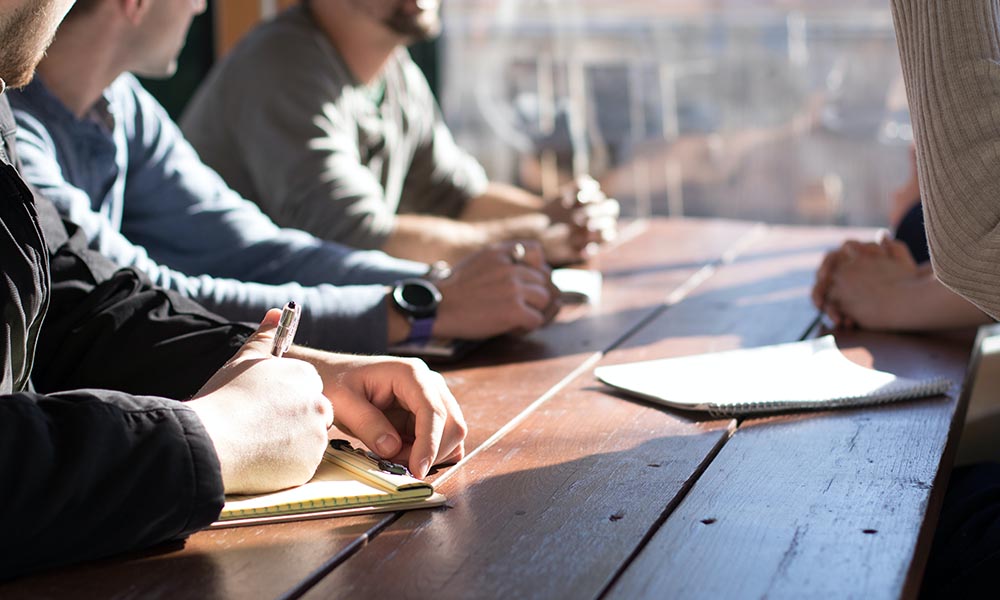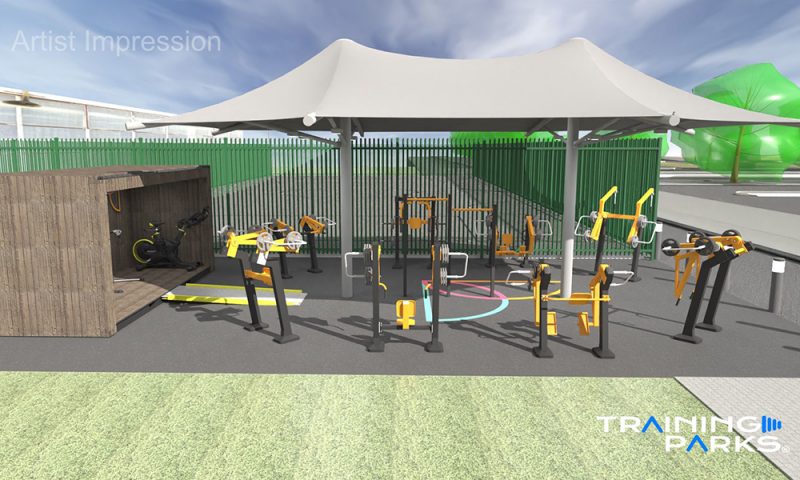
Taking your office outside: The rise of alternative workspaces
Even though the government lifted the remaining COVID-19 restrictions in the spring, 36.5% of the population works mainly from home.
With this in mind, it’s no surprise that the definition of the post-pandemic workplace is constantly changing and evolving. Employers and employees are trying to balance pre-pandemic working methods (travelling to the office) and a more flexible hybrid culture – where time is split between the office and home.
The adoption of hybrid working has understandably changed how the workforce lives and works, and contributed to the emergence of new workplace trends.
One of these key trends is outdoor working. Throughout the course of the first lockdown, between March – July 2020, many sought refuge from the monotony of life in their gardens. For many, having access to some green space was vital for their overall health and wellbeing.
As businesses begin to insist on the workforce returning to the office, it’s clear that an ease-of-access to green space will become increasingly important to workers. Here’s how embracing the great outdoors will have a positive impact on businesses in the coming years:
From a small desk to the great outdoors
The benefits of spending time outside have been regularly lauded in recent years. Even before the pandemic, the NHS had started investing in social prescriptions – encouraging people to spend time outdoors gardening, or exercising to protect or improve their general mental and physical health.
While outdoor spaces may have once been considered a one-stop for some quick fresh air, many employers now regard their office’s green space as a functional extension, where they can work, conduct meetings or eat lunch. Even before the pandemic, a 2018 survey revealed that 86% of workers welcomed spending more time outside during a typical working day. Furthermore, 71% of office workers found that their stress levels had reduced due to being able to work outdoors.
When working from home at the beginning of the pandemic, many employees embraced working outside. Calls and virtual meetings were conducted during daily exercise. Taking the office outside was a novelty that broke up the monotony of early lockdown life. Green spaces offered a welcome sanctuary when faced with the external stresses of remote working – like homeschooling or infection.
When back in the office, outdoor workspaces are not only designed to improve the functionality of a traditional workplace, but can also give staff members access to fresh air and sunshine. Not only can this offer workers a physical boost (from being outside), but the additional Vitamin D can also help their wellbeing.

The impact of biophilic design on the workplace
For businesses wanting to increase their connection with the great outdoors, embracing biophilic design is vital.
Biophilia is anything that imparts the feeling of nature indoors – the innate human instinct to connect with nature and other living beings. Incorporating biophilic design into an office’s decor and layout can also have a direct, positive impact on the workforce’s physical and mental wellbeing. With 33% of office workers saying that the design of an office actively affects their decision to work for a company or not, employing (and retaining) staff can be directly influenced by a company’s connection to nature.
Biophilic design is taken to the next level for businesses wanting to create a functional outdoor workspace for their teams. Instead of just having the feeling of nature in the workplace, staff are connected directly to it, and can experience nature while they work, knowing that the space they have access to is functional (shaded and ventilated), while aiding their productivity and wellbeing.
Simply put, instead of just having the feeling of nature in their space, they have a blended workspace that is directly connected to it. When you consider the long-term impacts of hybrid working, introducing elements of nature in the workplace also has the potential to reduce widespread mental fatigue.

Could taking the office outside be the key to increased productivity?
A 2018 survey from Opinium revealed that the average British person spent an average of 22 hours inside – roughly 90% of the day. Furthermore, 42% of those questioned believed spending a lot of time in an office would harm their health.
The impact of an office’s layout and design has been studied and scrutinised since as early as the 1950s, with early studies suggesting a direct correlation between a space’s layout and employee output. The Fellowes Workplace Wellness Trend Report reinforces this belief.
Office workers also want to work in a healthy environment – 87% of workers would like their current employer to offer healthier workspace benefits – ranging from dedicated wellness rooms to standing desks and ergonomic chairs.
So, could taking the office outside be the key to unlocking productivity?
In September 2020, research commissioned by Lenovo revealed that spending just 29 minutes outdoor in nature can result in a 45% increase in productivity for office workers. With remote workers reporting a 77% uplift in productivity when working remotely, it can be challenging to tempt workers back to the office. If they are seemingly more productive at home, and don’t have to contend with a commute – why should they return to the office at all?

Establishing the future of outdoor work at White Rose Park
Here at White Rose Park, our priority has always been our tenants’ and the on-site community’s health and wellness.
That’s why, this summer, we’re teaming up with Sarah Holland from the University of Leeds to explore the potential of outdoor workspaces. We’re looking for volunteers to contribute to a study that will help us understand the benefits of alternative workspaces.
The study will help us understand an alternative outdoor workplace as an office initiative. By taking part in the research, you will be encouraged to keep an audio and photo diary, and participate in two interviews – while directly influencing the future of areas like workspace design, management, and HR.
We’re encouraging those on-site to participate in this study, and share their experiences of using alternative workspaces. In time, we hope to promote and develop better workplace initiatives for those working at The Park.
Continue reading

Outdoor Fitness Concepts (OFC) are delighted to announce their partnership with Munroe K, owners and...
Read More
Munroe K, and global property consultancy Knight Frank, today announce they have brokered one of...
Read More


